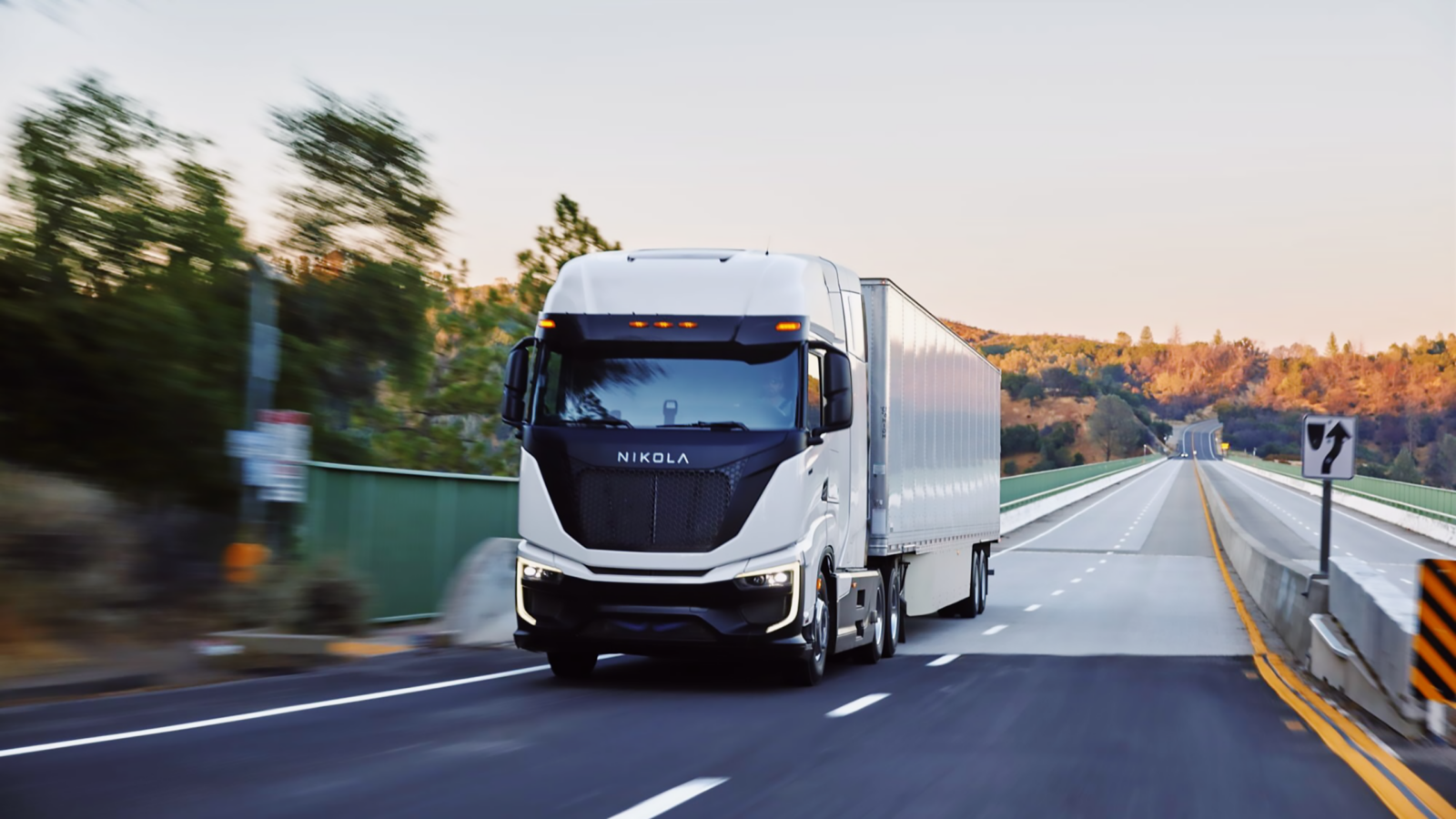Uber’s Drive to Survive: Can the Rideshare Giant Sustain its Recent Success?
Uber, finally having achieved sustainable levels of market dominance, may just be facing its biggest roadblocks yet.

It took well over a decade, but Uber has finally reached its destination: profitability.
For the first time ever, the rideshare giant and “gig economy” pioneer ended a full year in the black, generating an operating profit of $1.1 billion in 2023. That followed a loss of $1.8 billion in 2022, which capped a decade-long stretch of publicly reporting cumulative losses that totaled over $31 billion.
Other companies in the gig economy are similarly rounding into money-making maturity. But is it too little, too late?
Inflation and subsequent hikes in interest rates have cut off access to the ultra-cheap capital that Uber employed to launch a rapid global expansion. Meanwhile, regulation at the local, state, and federal levels is threatening to undermine the very gig-based labor model that Uber and similar companies are based on. The gig economy, finally having achieved sustainable levels of market dominance, may just be facing its biggest roadblocks yet.
Put it in Reverse
Uber’s playbook was simple: facilitate connections between people who need rides and people willing to drive around strangers in their own cars — thus creating a fleet of personal drivers while deftly (or bluntly, depending on who you ask) skirting laws and rules regulating the taxicab and commercial driving industries.
But turning that into an actual business proved much more difficult.
As a startup, Uber raised a total of $22.2 billion across 20 rounds ahead of its 2019 IPO, according to Crunchbase, with notable backers including Softbank, Toyota, and Saudi Arabia’s Public Investment Fund.
Much of the VC cash was funneled toward stabilizing the same delicate balancing act that continues to bedevil Uber — and all gig economy apps — to this day: subsidizing the cost of rides to attract customers with cheap fares (remember when Ubering from the airport barely topped $12?), while still paying enough to attract a fleet of willing drivers who relished the choose-your-own-hours flexibility of their independent contractor status.
Fed up with the Luddism of traditional taxi cabs, millennials, in particular, flocked to the app. And, for years, Uber happily clung to a growth-at-all-costs strategy (with the costs, in this instance, being the literal, aforementioned $31 billion in cumulative losses).
Then the company went public in May 2019 at an $80 billion valuation — down from pre-IPO investor rounds that had valued the firm as high as $120 billion — and quickly suffered the biggest first-day dollar loss in US stock market history.
The pandemic, naturally, crushed the company’s business. But by 2023, strong demand returned, and Uber, at long last, began adjusting its internal dials away from growth and toward profit.
That was good for Uber shareholders. For everyone else, well…:
- Last year, Uber drivers’ average monthly gross earnings fell by over 17%, according to data analyzed by industry research firm Gridwise Analytics.
- During a 45-month long span that stretched from 2018 to 2022, Uber fares for riders increased 83%, according to a Forbes data analysis, equivalent to four times the rate of inflation.
Copy Cats: Uber’s woes are not unique. Competitor Lyft, which has never turned an annual profit, has been forced to increase driver pay to attract drivers — though wheelmen in its fleet still earn comparatively less than Uber, around $1,058 per month versus Uber’s $1,409, per Gridwise. In February, Lyft said it would guarantee drivers a 70% commission from every ride. Lyft reported a $350 million loss in 2023, an improvement from the $1.6 billion loss the year before. The company’s total cash on hand has dwindled to just under $1.7 billion, down from around $3.3 billion in 2019.
Food courier service DoorDash, meanwhile, also has never turned an annual profit. Last year, the company reported $550 million in losses, an improvement from the $1.3 billion loss it suffered in 2022. In the pandemic years of 2020 and 2021, when restaurants were largely closed and takeout reigned supreme, DoorDash reported annual losses of more than $460 million each year.
Did you Executive Order an Uber Yet? There are now roughly 1 billion workers employed by a gig economy app in one form or another, according to a recent investigation by the Financial Times. And managing that fleet — setting wages and maintaining drivers, without letting costs for customers get too high — has been the tricky task that all Uber-esque companies face.
But soon, these questions may largely be out of their hands.
In January, the Biden administration signed an executive order, which went into effect earlier this month, directing the Department of Labor to begin re-classifying gig workers from “independent contractors” to “employees” if they are proven to be “economically dependent” on work from an app. The directive could grant workers stronger compensation, benefits, and legal protections.
But Biden’s order is just the latest — and perhaps the most legally loose — of a wave of legislation. High-court judges in the UK, Canada, France, Switzerland, and elsewhere have declared that gig workers are employees, and thus have rights to a minimum wage, among other benefits; Uber typically has a lower market share in foreign countries compared to the US.
In the US, state and local legislation has similarly pushed the bar higher:
- In 2019, California passed the high-profile “Assembly Bill 5,” which outlined stricter worker classification rules; Biden’s order is largely based on this bill. But in 2021, an industry-backed ballot initiative in California, Proposition 22, walked back many of the new rules; Uber, Lyft, and fellow industry peers poured $200 million into campaign support for the measure.
- Last year, New York City Mayor Eric Adams and the New York City Department of Consumer and Worker Protection announced that the city’s 60,000 app-based food delivery drivers in the city would be guaranteed an hourly minimum wage of $17.96 per hour, up from a current $7.09 per hour minimum wage. The rule goes into effect in May.
- Uber and Lyft have recently threatened to cease service in Minneapolis if a minimum wage law, also set to go into effect in May, takes effect. The state’s governor says he is seeking a compromise with the industry.
The effect of new employee classification laws is already taking effect. San Francisco’s city attorney reached a settlement with Qwick, a company that operates an “Uber for catering and restaurant staff” app. Qwick agreed to pay $1.5 million in back wages, as well as $250,000 in penalties for misclassifying employees as independent contractors. It’s the first known time a modern gig company in the US has acknowledged such a misclassification, Veena Dubal, a law professor at UC Irvine, told The Los Angeles Times.
Still, the barrage of new laws at various levels may only create confusion, some argue. “Overall, our labor markets are in constant flux and there is little coherent and consistent guidance from lawmakers,” Charles Krugel, who practices labor and employment law on behalf of business, told The Daily Upside. “Essentially, lawyers like myself stand to benefit the most from these changes.” In other words: expect ongoing, and expensive, litigation as Uber and its industry peers continue to fight these new classifications.
The Road Ahead: Still, Uber may, for now, have a smooth road ahead of it. Demand for rides remains strong, despite steady increases in prices. And its profitable 2023 has sent its share price to all-time highs, where it still regularly trades around.
Last year also marked a new, perhaps telling, first for the company: the first rollout of fully autonomous cars in its rideshare fleet, with a partnership with Google’s Waymo bringing self-driving Ubers to the city of Phoenix.
Robots, of course, don’t need a minimum wage — possibly solving Uber’s unending battle with its gig workers.
But Uber’s history is full of always-on-the-horizon optimism. And an all-autonomous future may not bring it any closer.
“The initial deployment of driverless cars, if it ever happens, would seriously increase Uber’s costs, and the S-1 clearly shows that Uber lacks the capital needed to become a major player in this brave new world,” Hubert Horan, a consultant with 40 years of experience in the management and regulation of transportation companies, recently told The Verge.













Leave A Comment